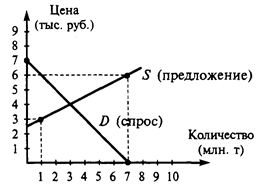Stockton-Darlington Railway
Stockton & Darlington Railway (S& DR) was the world’s first railway to successfully use steam locomotives for carrying freight and passengers. In 1821, a parliamentary bill was passed to allow the building of the S& DR. The 26-mile railway was to connect various coal mines. The original plan was to use horses to draw coal carts on cast iron rails. But George Stephenson, an English mechanical engineer, persuaded 1 company director Edward Pease to use steam power. He said that a locomotive could pull 50 times the load that horses could draw on iron rails. Pease agreed to change his plan. Stephenson surveyed the line in 1821, assisted by his 18-year-old son Robert. Work on the track began in 1822. Stephenson used wrought-iron rails instead of cast iron ones. These rails were more expensive but they were much stronger. On the 12-mile line connecting Stockton and Darlington, the rails were laid on wooden blocks. The 15-mile track between the mines and Darlington was laid on stone blocks. The gauge that Stephenson chose for the line was 4 feet 8½ inch (1, 435 mm). Later, it became the standard gauge for railways not only in Britain but also all over the world. The line’s structures included one of the first railway bridges. Designed by architect Ignatius Bonomi, the bridge over the Skerne river in Darlington is the oldest railway bridge still in use today. Edward Pease and George Stephenson jointly established a company in Newcastle to manufacture locomotives for the new line. The company was set up as Robert Stephenson & Company, and George’s son Robert was the managing director 2. In September 1825, the first locomotive originally named Active was completed; it was soon renamed Locomotion Number One. It was followed by Hope, Diligence, and Black Diamond. The official opening of the line was on September 27, 1825. Large crowds saw George Stephenson operating the Locomotion as it pulled 36 wagons: twelve wagons of coal and flour, six of guests and fourteen wagons full of workmen. Most of the passengers sat in open coal wagons, but 18 visiting dignitaries3 traveled on the passenger carriage called The Experiment. This coach resembled a wooden shed4 on wheels and as it had no springs5 it must have provided an uncomfortable ride. The first train was not fast; it took two hours to cover the distance of 9 miles. However, on one section of the line the locomotive could reach a speed of 24 kmh. For the first few years, horse traction dominated on the S& DR because steam traction was too expensive. But as time went on, steam locomotives proved to be more economic – they could haul more wagons, and haul them faster. In a typical working day the most expensive steam engine could haul more coal than the cheapest horse! By 1833, the S& DR had become entirely steam-operated, and it gradually began to resemble a modern railway. Two parallel tracks were built for trains traveling in different directions. A simple signaling system was established to prevent collisions. Trains began to run to timetable. These methods of operation became standard on railways across the world. The S& DR proved a huge financial success, and paved the way for modern rail transport. In 1863, the S& DR company merged with the North Eastern Railway and in 1922 with the London and North Eastern Railway. Much but not all of the original S& DR line is still operating today.
Notes: 1to persuade – убеждать; 2managing director – исполнительный директор; 3visiting dignitaries – высокопоставленные гости; 4shed – сарай; 5spring – рессора, пружина.
|




